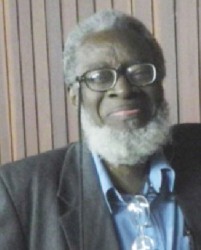Government yesterday announced that it will be distributing 6,000 more solar panels to hinterland communities and while they would only on the average power a single light bulb, this was enough for those who were in darkness.
“You know they say in the land of the blind [the] one-eyed man is king? Well in the land of darkness, 65 watts is indeed bright lights and power,” Luncheon said when asked about the capacity of the panels.
The $166 million project will commence shortly in Regions 1, 7, 8 and 9 will be executed by hinterland residents who were trained, during another phase of the project, to install the panels.

Luncheon said the 600 homes to benefit from the distribution are those which are not on the grid and possibilities for it happening will be over a prolonged period. “Looking at projections from GPL, these riverain coastal areas that are likely to remain off-grid for quite some time to come, notwithstanding GPL’s increased generation and GPL’s transmission and distribution initiatives,” he explained.
The Cabinet Secretary noted that to date some 13,000 panels have been distributed in hinterland villages.
Luncheon pointed out that while some might view the timing of the distribution as being tantamount to buying votes from the Amerindian communities, government was grateful if the receivers would vote for them.
“We have, indeed, been addressing power needs in hinterland communities for over a decade and if, indeed, it were to be associated with a fitting response by the recipients, then I think this is quite reasonable,” he said.
The announcement came in for sharp criticism from Leader of the opposition coalition, APNU-AFC, David Granger who said that not only was the project “campaigning for votes” but it was not realistically planned to meet the needs of the recipients.
“There are several issues here. It is tokenistic, an attempt to buy votes from the Amerindian people and not a serious attempt to provide electrification to hinterland residences,” Granger told Stabroek News.
He said that as he travels throughout hinterland villages in the country he listens to residents who bemoan the utility of the panels. “The children cannot even do homework with the power from those panels. It just cannot do for high wattage bulbs. It is nothing but cheap tokenism,” he stressed.
“Because of the deprived state of the people in the Amerindian communities they feel they can give them anything and that they should be appreciative. There is no attempt to make the people get useful forms of power for their everyday household activities and so that the children can do their homework,” he added.
Granger said many of the panels are defective and if government was to do a survey of how many are functional they would see this and also the high rate of abandonment of the solar gadgets.
He feels government has timed the distribution to be simultaneous with its general and regional elections. “Look at the timing. They are trying to empty the bond before the next government takes office and at the same time use the resources to campaign. The scale of how many and the time shows they are trying to gain votes of the Amerindians,” he asserted.
Further stating “It is part of the desperation of the PPP to gain favour with the Amerindians.”
The Hinterland Elect-rification Programme (HEP) was launched back in 2005 after government sought to explore options for the sustainable electrification of the hinterland, as part of the National Unserved Areas Electri-fication Programme. It is being executed by the Hinterland Electrification Unit of the Office of the Prime Minister.
The package for distribution includes a photo-voltaic panel, 6A-12V DC charge controller, 67 Ah -12V deep cycle gelled electrolyte battery fitted with suitable terminals, sunlight resistant cable, 10 A, 1-pole DC circuit breaker, 9W-12VDC compact fluorescent lamps and a DC lightning arrester, with a unit cost of US$241.
Government had explained that a study done by the Hinterland Project Preparation Component of the UAEP identified solar panels as the best alternative energy source for the hinterland. “This is based on several factors including limited economic opportunities, lack of developed infrastructure as compared to rural areas on the coastland, and villages are widespread and houses are largely dispersed from each other,” it said.
The study also revealed that solar energy is probably the best source of energy for the majority of hinterland areas as Solar Home Systems would facilitate the installation of individual, isolated systems avoiding the use of grids that would be costly due to long distribution lines.
Through the UAEP, 24,000 households benefited from electricity.




